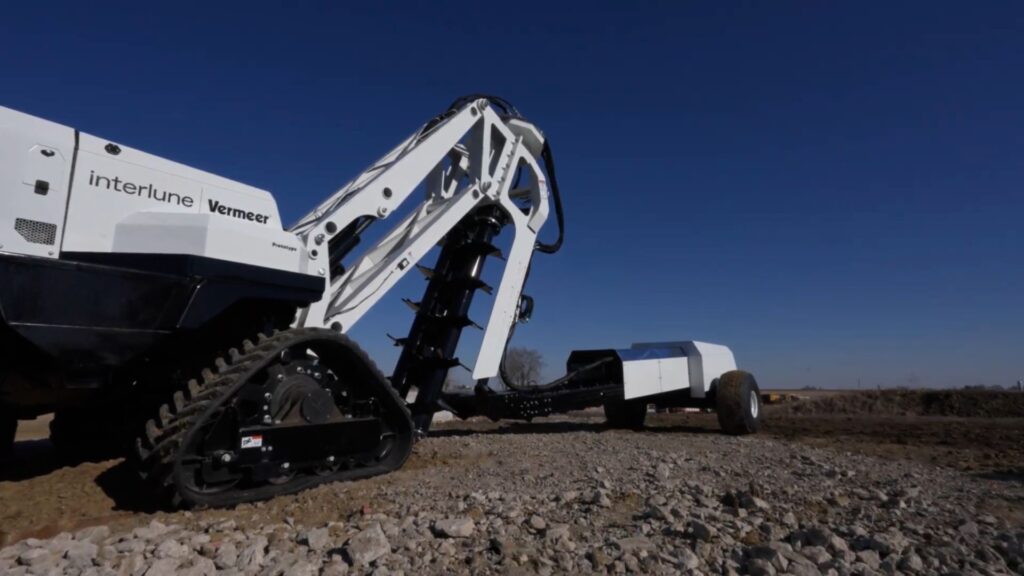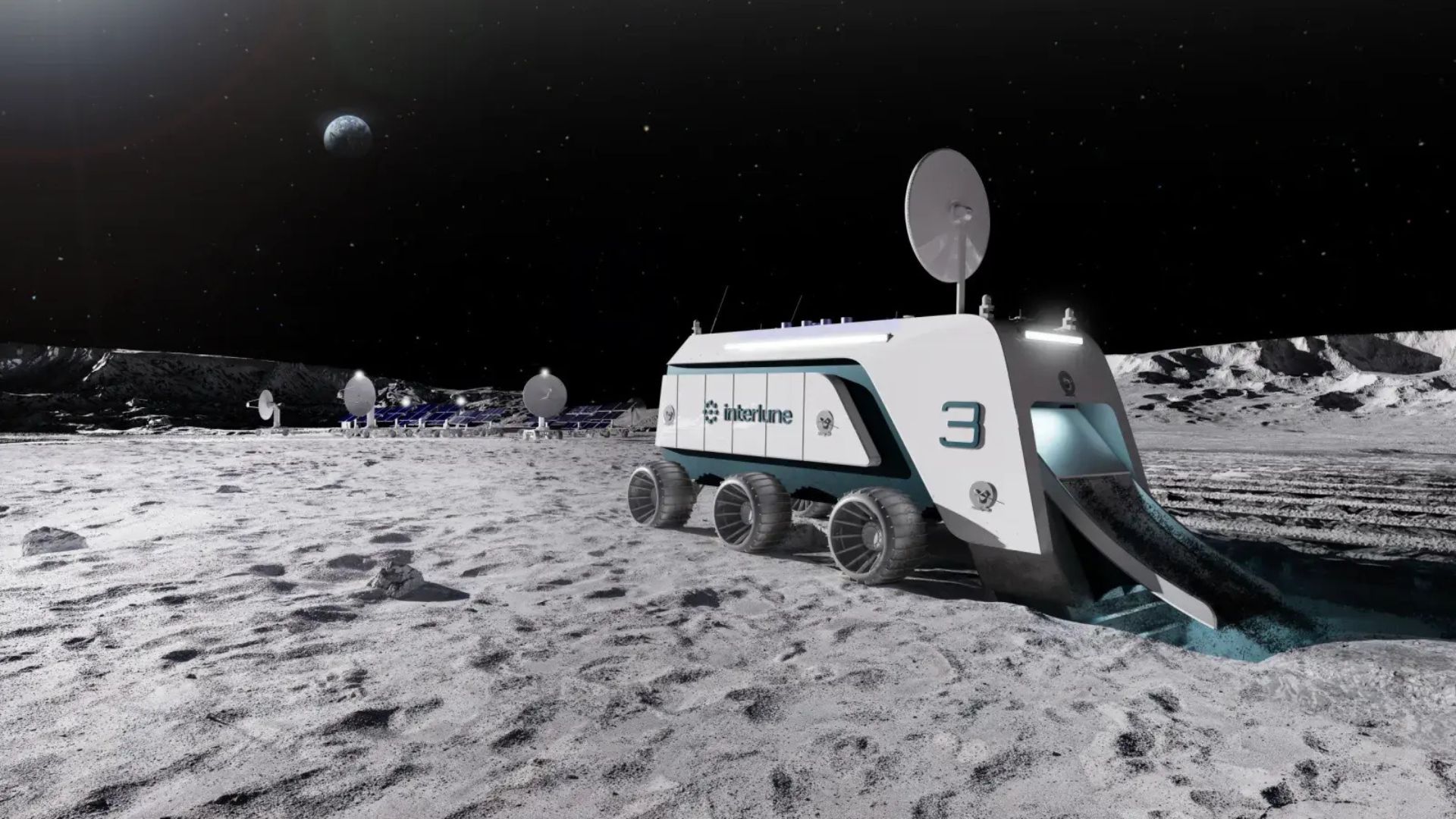
Read Less | courtesy of Interlune
The competition to reach the Moon’s south pole has intensified as the United States and China vie for dominance over a region rich in water ice and rare helium-3 isotopes valued at roughly $19 million per kilogram. Acting NASA Administrator Sean Duffy proclaimed America’s “manifest destiny to the stars” in an internal briefing, underscoring the urgency of outpacing China in what many are calling a second space race.
Commercial Players Enter the Fray
Seattle startup Interlune, founded by former Blue Origin president Rob Meyerson, has unveiled a full-scale prototype excavator designed to process 100 metric tons of lunar regolith per hour. Interlune has already secured contracts with the U.S. Department of Energy and Maybell Quantum Industries, targeting first helium-3 deliveries by 2029. Each of the company’s five planned mining units could yield at least 10 kilograms of helium-3 annually—nearly $200 million in value per unit (Interlune prototype excavator).
China Advances South Pole Exploration
China’s Chang’e-7 mission, slated for 2026, will deploy a hopping spacecraft to map water ice in permanently shadowed craters. This mission paves the way for Chang’e-8 around 2029, which will target the Leibnitz-Beta Plateau with international payloads as part of the planned International Lunar Research Station. Beijing has already made history by retrieving samples from the Moon’s far side, demonstrating its growing lunar capabilities.
Artemis Program Faces Delays
NASA’s Artemis 3 mission, currently scheduled for September 2026 and reliant on SpaceX’s Starship, has suffered repeated delays. Ship-to-ship propellant transfers and an uncrewed landing demonstration remain untested, prompting skepticism about the U.S. beating China’s timeline. Former NASA Administrator Jim Bridenstine warned that meeting the ambitious schedule is “highly unlikely” given past postponements.
Expanding Resource Targets
Recent thermal data from India’s Chandrayaan-3 mission revealed that slopes tilted away from the Sun by more than 14° can preserve ice, broadening potential mining locations beyond deep craters. This discovery expands the hunt for water—essential for life support and fuel production—and emphasizes the Moon’s south pole as the ultimate resource frontier.
Strategic Stakes of Helium-3
China discovered the mineral Changesite-(Y) containing helium-3 in samples returned by Chang’e-5, making it only the third nation to identify a new lunar mineral. Although helium-3 fusion remains theoretical, its promise of clean, nearly limitless energy has reignited global interest in lunar mining. Establishing autonomous extraction systems, lunar infrastructure, and reliable cargo return vehicles will be daunting, but securing these resources has become a strategic priority for both superpowers.











